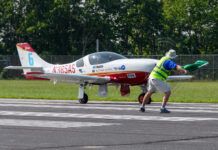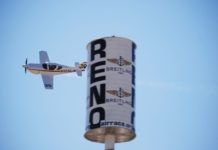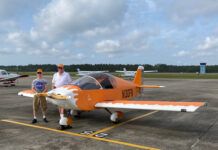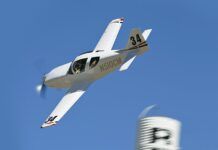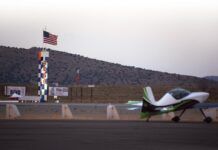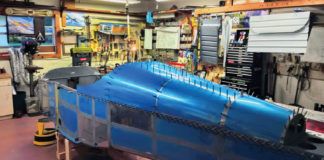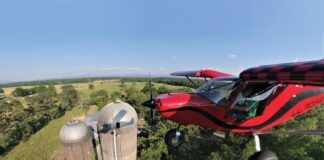“Too much is just right” is the juvenile mantra I must admit leaning toward in my relevant internal combustion years. Not that I could afford the hero-class gas-burners of my dreams, but left on my own, I would sneak over to the model with the bigger engine and give it a go. As so far I’ve spent three plus decades in auto journalism, that has been pretty easy to do.
There’s little mystery why the call to power: My youth was expended in pencil-necked twerp import pickups, sports cars, and rented Cessna 150s as I could swing the coin, so when opportunities to explore the less than 10 pounds per horsepower neighborhood began coming my way, I was like a teased animal let off the leash.
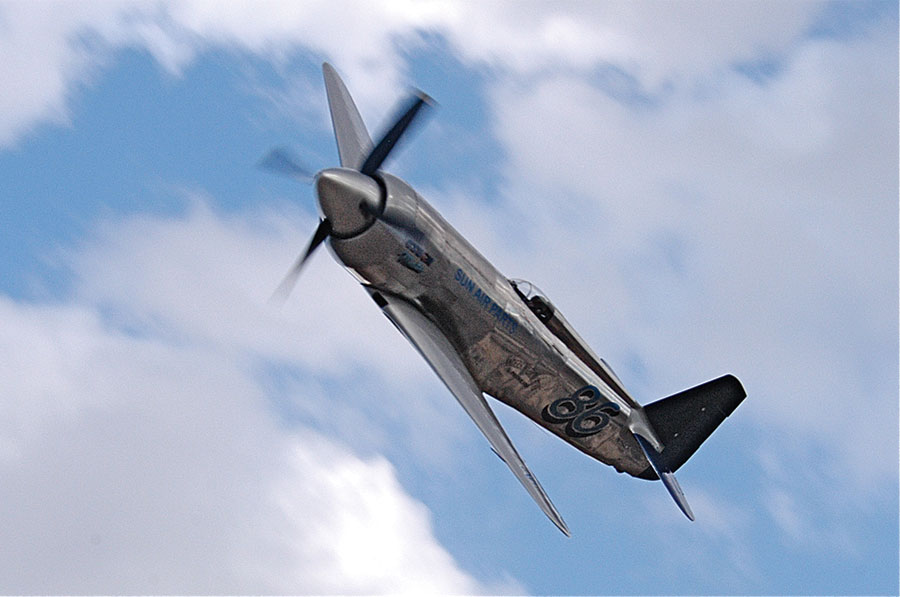
Speed was the need when Bob Yancey homebuilt Czech Mate. But other priorities eventually surfaced, and luckily there was a market for hairy-chested racers when he sold it.
And it’s been so ever since. Given half a chance (read: the engine blew up and was headed to the shop), the urge to pump up the power has proven like so much catnip—and rarely have the results disappointed.
Eventually I found my limit on street tires, somewhere between 750 and 800 horsepower in your typical muscle-sports car. That’s where wheelspin takes over from acceleration, and handling goes from satisfying to riding a bar of soap on the shower floor, so there’s no point in paying for more power. But that’s in cars.
Airplanes, like boats, are rather more difficult to overpower. If a car hits the lack of traction barrier with the same finality as a gnat meets a Glasair windshield, aircraft with adequate power (plus) fade more into overspecialization. They get fuelish, nose heavy, and need increasingly more right rudder on takeoff, but they always climb better and eliminate (wink) the need for tedious baggage and fuel weight calculations because if it’ll fit through the door they can lift it. So, it isn’t like they’re immediately useless.
To digress pleasantly, it is, of course, possible to overdo it. I recall Bob Yancey gazing at Perestroika, the Yak-11 air racer now known at Czech Mate. He and crew chief Bill Whitlatch had ditched the 730-hp Russian round motor in favor of a proper 2400-hp Pratt & Whitney R-2800. That quickly gave about 430 mph, and you can rest assured the assemblage was just as two-handed as you’d imagine.
Bob stood there, languorously contemplating what he had created with the same quiet wonder all racers have for their mounts. Then he said to no one in particular, “What a piece of $%#&! That thing cost a fortune. It drinks 200 gallons an hour. It’s 140 degrees inside, and with that little canopy it’s blind as a bat. You can’t wheel land it because of the big prop. And the noise! The racket is incredible…” and his voice trailed off into a moment of silence. And then, “But God is it fast!”
If the unlimited air racer may be a touch more single-purpose than any of us is about to rivet together in our garage, what about the airplanes we are building? Or the planes we think we want to build? Dreaming is a prerequisite to airplane building, but is what you dream really what you’ll want when you get there?
And there’s the finer point: the “when” of when you get there. Building—or rebuilding—airplanes is a time-intensive undertaking as I trust we’ve all divined by now. The boss says an average time needed for Joe Jetsuit to fully transform a kit into a flying machine is one of the experimental world’s great dark unknowns. If no statistics are readily available, I’d wager that including the never finished kits, the industry average build time likely stretches beyond the human lifespan. That said, for our wildly casual purposes I’ll propose seven to 10 years as an average build time for those planes that do get completed. That should accommodate the many quickbuilds that break the surly bonds in as little as a couple of years, along with the legions of 10-year builds followed by the smaller but meaningful minority of up to two decades in progress. My guess is if they haven’t gone together from the time junior was born until his sophomore year in college, they probably aren’t going to get finished, at least not by the original kit buyer.
In short, most of us take quite a while to build our planes. And is the plane we think we want when we’re 38 years old the same plane we’ll appreciate when we’re 52?
If it’s an RV-X you’re banging together, it probably is. But that’s only because RVs are the all-around decathletes of the little airplane world. Hanging out at the ground center of sport aviation as they do, they apparently make good companions at any stage of one’s life, from eager youngsters looking for zoomy performance to retirees wanting an economical ride to the grandkids’ place.
But that’s not the case with so many experimental designs. Most kit airplanes aren’t the result of the designer’s admiration for the Piper Cherokee. They’re to satisfy an enthusiasm for something more honed: better short- or rough-field ability, or more speed, or aerobatics, or transcontinental cruising, and on and on. As a result, they sacrifice some things to meet the designer’s main goal, hence their greater specialization.
Curiously, the more passionate you are about one corner of aviation, the easier it is to select an airplane to match the need. Amphib fans need not sift through hundreds of designs. Energetic youth with a desire to tumble don’t need to think twice about building a Pitts Special after eyeballing the price tag on an Extra. Dedicated backwoods campers have only a short list of Cub-like designs to choose from.
The trick is, if you’re 28 years old and using dad’s 150 Commuter for flying into the woods with your girlfriend every weekend, then embark on a six-year RANS S-7 build to obtain a more suitable backcountry airplane, is that S-7 going to be what you need when you’re 34 and have two kids? Maybe a four-place Bearhawk would have been the better, albeit more expensive, choice in the beginning.
When the engine on my sport biplane came up lame and I put it in the shop, two things happened. I hot rodded it as much as I dared, and over six years passed in the process. As I was finishing up the installation, I realized I had built the perfect airplane for 15 years before. Avgas had soared from $2 to over $5 per gallon, I had a new need for reading glasses, and my family was showing signs of wanting to tag along…and what I had was an expensive rat rod.
Thanks to an accommodating family and the happy discovery that a more powerfully efficient engine is also a more fuel efficient engine if you pull the loud lever the other way—”What? It works both ways?”—my hot rod has proven a workable compromise for the varied flying I find myself doing now. But as with the rest of my life, it was far more the result of being lucky rather than good. With a reminder to consider the future, maybe you can be more good, and hopefully still lucky.


